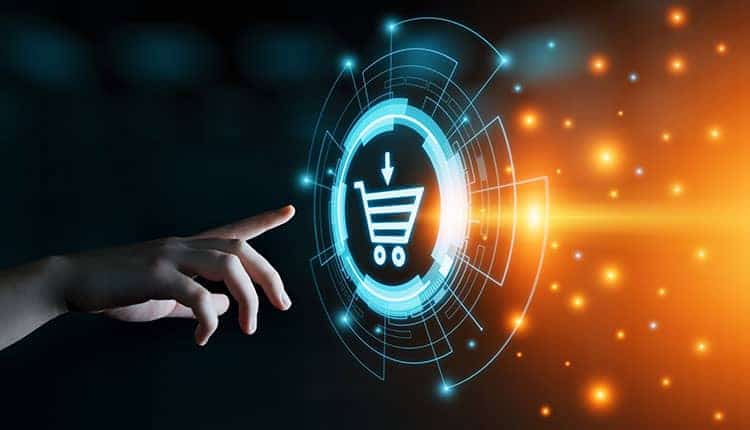In the last few decades, the way we shop has transformed drastically, thanks to the emergence of e-commerce. This digital phenomenon has revolutionized the retail industry, providing consumers with unparalleled convenience and businesses with unprecedented opportunities for growth. In this blog, we’ll delve into the evolution and impact of e-commerce, exploring its benefits, challenges, and future trends.
The Evolution of E-Commerce: From Web 1.0 to 5G Era
The journey of e-commerce began with the advent of the internet and the launch of the World Wide Web in the early 1990s. The initial phase, often referred to as Web 1.0, focused on static web pages with limited interactivity. Online retailers displayed products like digital catalogs, allowing customers to browse and place orders through simple forms.
As technology advanced and internet speeds increased, Web 2.0 emerged, marking a shift towards more dynamic and interactive online experiences. E-commerce platforms started integrating user-generated content, reviews, and social sharing features, enhancing customer engagement. The rise of mobile devices further catalyzed the evolution, leading to the mobile commerce (m-commerce) trend.
Fast forward to today’s 5G era, where e-commerce is seamlessly integrated into our daily lives. Augmented Reality (AR) and Virtual Reality (VR) technologies enable customers to visualize products before purchasing. Moreover, Artificial Intelligence (AI) and Machine Learning (ML) algorithms power personalized recommendations, making the online shopping experience more tailored and enjoyable.
The Impact of E-Commerce: Benefits and Challenges
- Convenience and Accessibility: One of the most significant impacts of e-commerce is the convenience it offers. Shoppers can browse, compare, and buy products from the comfort of their homes, eliminating the need to visit physical stores. Additionally, e-commerce transcends geographical boundaries, allowing customers to access global markets easily.
- Diverse Product Range: E-commerce platforms host a vast array of products that might not be available in local stores. This diversity caters to niche markets and unique preferences, giving consumers more choices than ever before.
- Cost Efficiency: Running an online store is often more cost-effective than maintaining a brick-and-mortar establishment. Businesses can save on rental space, utility bills, and staffing costs, enabling them to offer competitive prices to customers.
- Data-Driven Insights: E-commerce generates a treasure trove of data about consumer behavior, preferences, and trends. Retailers can leverage this data to refine their marketing strategies, optimize their inventory, and enhance customer experiences.
- Global Reach for Businesses: Small and medium-sized businesses can now compete on a global scale through e-commerce. The internet provides a platform for even the smallest ventures to showcase their products to a worldwide audience.
However, along with its benefits, e-commerce also presents challenges:
- Competition and Saturation: The low entry barrier to e-commerce has led to a crowded marketplace. Standing out amidst the competition requires unique value propositions, exceptional customer service, and targeted marketing efforts.
- Security Concerns: Online transactions raise concerns about data security and privacy. Customers need assurance that their sensitive information is protected from cyber threats, requiring businesses to invest in robust security measures.
- Logistics and Fulfillment: Timely delivery is crucial in e-commerce. Businesses need efficient logistics and fulfillment strategies to ensure that products reach customers on time and in good condition.
- Lack of Tangible Experience: Unlike physical stores, e-commerce cannot offer customers the tactile experience of touching and trying products before purchase. This challenge is being addressed through technologies like AR and VR.
Future Trends in E-Commerce
- Omnichannel Shopping: The future of e-commerce lies in creating seamless experiences across various channels, including websites, mobile apps, social media, and physical stores. Customers expect consistency as they transition between these platforms.
- Voice Commerce: The rise of voice-activated assistants like Siri, Alexa, and Google Assistant is paving the way for voice commerce. Shoppers can now place orders using voice commands, simplifying the buying process further.
- Sustainable E-Commerce: As environmental awareness grows, sustainable practices in e-commerce will become more crucial. Consumers are inclined to support brands that prioritize eco-friendly packaging, ethical sourcing, and reduced carbon footprints.
- Hyper-Personalization: AI-driven personalization will reach new heights. Shopping experiences will be tailored to each individual’s preferences, browsing history, and behavior, enhancing engagement and loyalty.
- Social Commerce: Social media platforms are becoming more integrated with e-commerce, allowing users to shop directly through posts and ads. This trend blurs the lines between social interaction and shopping.
In Conclusion
E-commerce has come a long way from its humble beginnings, reshaping the way we buy and sell goods. Its evolution continues to be fueled by technological advancements, changing consumer behaviors, and innovative business strategies. As we move forward, embracing the potential of e-commerce while addressing its challenges will be essential for businesses aiming to thrive in the digital shopping revolution. Whether it’s through omnichannel experiences, sustainable practices, or AI-driven personalization, the future of e-commerce holds exciting possibilities for both consumers and entrepreneurs.




